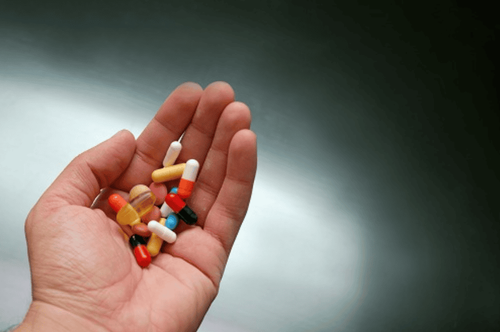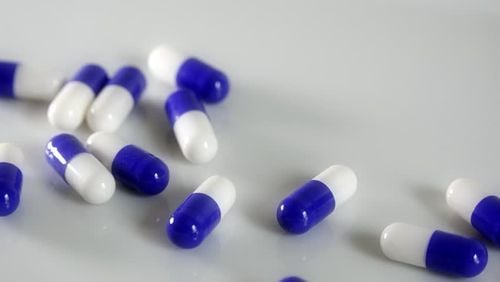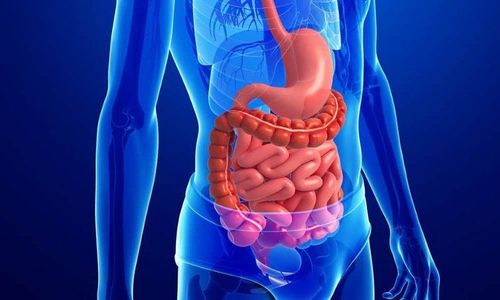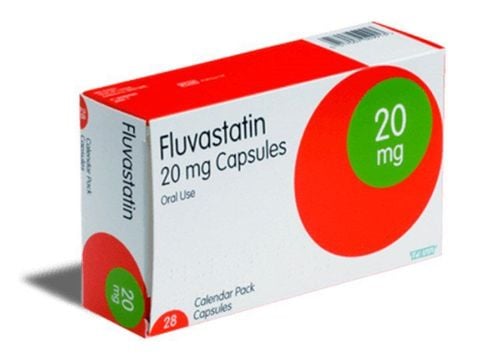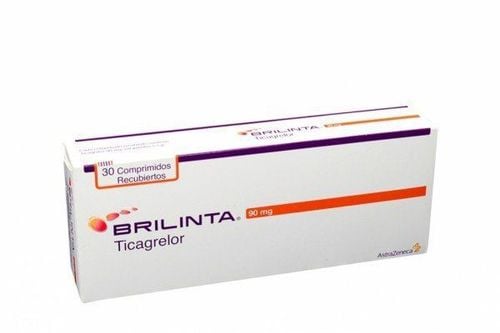This is an automatically translated article.
Triglycerides are a common type of fat that makes up about 95% of all fat in the diet. Both animal and vegetable fats contain triglycerides. Once digested, triglycerides circulate in the blood for cells to use for energy.If you regularly eat more kilos than you burn, you will become overweight and obese and may increase the level of triglycerides circulating in the blood. High blood triglycerides are associated with an increased risk of health conditions, including heart disease. High triglycerides are also known as hypertriglyceridemia.
1. What are triglycerides?
Triglycerides (triglycerides) are chemical compounds that are digested by the body to provide energy for metabolism. Triglycerides are made up of fatty acids and glycerol. They are stored in fatty tissues and provide us with energy. These lipid molecules are formed in the small intestine from the fats we eat. They are also made in the liver from excess sugar in food. Triglycerides also carry vitamin A, vitamin D, vitamin E and vitamin K in the blood.The triglyceride molecule is a form of the chemical glycerol (tri = three fatty acid molecules + glycerol = glycerol) that contains three fatty acids. To be absorbed, these are broken down in the small intestine, then reassembled with cholesterol to form chylomicrons. This is the source of energy for the cells in the body. Fat cells and liver cells are used as storage and release sites for chylomicrons when the body needs energy. Elevated triglycerides are a risk factor for atherosclerosis, narrowing of the arteries with the accumulation of fatty plaques that can lead to heart attack, stroke, and peripheral artery disease. Markedly elevated levels of triglycerides can also cause fatty liver disease and pancreatitis.
2. The role of the Triglyceride index
High blood triglycerides can be a sign of:Acute pancreatitis; Drinking alcohol can increase blood triglycerides by causing the liver to produce more fatty acids. However, there are some beneficial aspects of moderate drinking, defined as one alcoholic beverage per day (one glass of wine, one bottle of beer, or one glass of brandy) that can balance the increase. this triglyceride. Moderate alcohol consumption can slightly raise HDL (good cholesterol) levels in the blood, and red wine contains antioxidants that may reduce the risk of heart disease. However, it is not recommended that people start drinking alcohol to get these effects. Type 1 or 2 diabetes or poorly controlled diabetes. Normally, the body makes insulin, which takes glucose into the cells, where it is used for energy. Insulin allows the body to use triglycerides for energy, but when someone is insulin resistant, the cells won't let in insulin or glucose, thus causing both glucose and triglycerides to build up in the blood. Hyperuricemia (high blood uric acid levels); CKD; Carbohydrate intolerance (in obese people); Risk of myocardial infarction, coronary heart disease. A 2010 study conducted at Harvard Medical School evaluated the relative contributions of triglycerides and HDL cholesterol in the risk of coronary heart disease after LDL cholesterol levels were lowered. The study that included 170 cases and 175 controls found that high triglycerides and low levels of HDL cholesterol were associated with coronary heart disease even in patients with lower LDL cholesterol levels. The incidence of coronary heart disease increases by about 20% per 23 milligrams per deciliter of elevated triglycerides; Cirrhosis or other liver diseases; Hypothyroidism; Certain medications (Ex: Beta-blockers, diuretics, birth control pills); Obesity: Hypertriglyceridemia plays an increasingly important role in the current obesity epidemic. Losing weight can achieve big improvements in metabolism, and there is indeed a correlation between weight loss and lower triglycerides.

Chỉ số Triglyceride trong máu cao là dấu hiệu của tình trạng suy giáp
3. The role of triglycerides in blood lipid testing
An increase in the level of triglycerides in the blood is a common disease, mostly in middle age. Blood triglyceride levels are measured with a simple blood test. Typically, triglycerides are measured as part of a lipoprotein panel (lipid panel), where triglycerides, cholesterol, HDL (high-density lipoprotein) and LDL (low-density lipoprotein) are measured at the same time.In fact, hypertriglyceridemia promotes the formation of acute pancreatitis, atheroma that increases the risk of cardiovascular disease and thrombosis (blood clotting), especially in the presence of cardiovascular risk factors. such as high blood pressure, sedentary lifestyle or obesity.
Blood lipid testing may also be ordered in cases of suspected diabetes because triglycerides rise when blood sugar levels are not controlled.
Sometimes people have no special symptoms when triglyceride levels are high. That's why this abnormal change in triglycerides was discovered incidentally during a blood test.
Before the blood fat test, you need to prepare:
It is best to draw blood in the morning, on an empty stomach (12 hours after starting the fast) Do not engage in strenuous physical activities Avoid smoking leaves In order not to falsify the results, do not change your eating habits the day or days before the blood test It is advisable to postpone the blood test if you have recently had an acute viral infection. Normal Triglyceride Test Index:
| Tuổi |
Nữ giới g/L |
Nữ giới mmol/L |
Nam giới g/L |
Nam giới mmol/L |
| 0-4 năm | 0,30-1,05 | 0,35-1,20 | 0,30-1,00 | 1,17-5,50 |
| 4-10 năm | 0,35-1,10 | 0,40-1,25 | 0,30-1,05 | 1,66-5,83 |
| 10-15 năm | 0,35-1,35 | 0,40-1,55 | 0,30-1,30 | 2,00-6,33 |
| 15-20 năm | 0,40-1,30 | 0,45-1,50 | 0,35-1,50 | 2,50-7,00 |
| Người lớn | 0,35-1,40 | 0,40-1,60 | 0,45-1,75 | 0,50-2,00 |
| > 70 năm | 0,30-1,20 | 0,35-1,35 | 0,45-1,50 | 0,50-1,70 |
Age: This value is lower in infants (- 50%) and in the elderly (- 20%) Gender: Price treatment is higher in men (+30%) Pregnancy: The gradual increase is especially evident from the 7th month onwards, the rate is twice as high as normal. Rates of return to normal occur within one to two months of childbirth Oral contraceptives: Up to 50% increase Smoking: Up to 50% Increase Alcohol: Double the rate Diet rich in carbohydrates can increase triglycerides by 10 to 50% Obesity: Rate is doubled; Meal: Rate can increase from 60 to 100% one hour after a meal. Returning triglyceride levels to normal can reduce the risk of heart attack, stroke, and peripheral artery disease. Managing high triglycerides and high cholesterol is a lifelong challenge. A healthy lifestyle that includes eating well, exercising regularly, quitting smoking, and losing weight can help. This may be all that is needed, but some people also need medication to lower blood triglyceride levels. Your healthcare professional will help you decide which combination of treatments is most appropriate.

Rượu có thể làm tăng gấp đôi tỷ lệ chất béo trung tính trong máu
4. Things to do to control blood triglycerides
4.1. Practice a healthy lifestyle Adopting a healthy lifestyle is important in reducing your “bad” cholesterol and triglyceride levels. Making the right food choices and incorporating exercise is crucial in maintaining healthy levels.Exercise Most adults need at least 30 minutes of physical activity each day. Exercise not only raises “good” cholesterol, but it also lowers triglycerides. Simple physical activities like walking, swimming, dancing, biking, or taking a group exercise class are ways to help you incorporate more physical activity into your day.
Weight loss Excess calories in your body are stored as fat after being converted to triglycerides. Avoiding sugar and simple carbohydrates can help you lose weight.
Choose healthy fats Not all fats are bad. Saturated fats found in meat and highly processed foods can be swapped out for healthier options, such as salmon and mackerel that are high in omega-3 fatty acids, lean white meat, nuts and seeds. and olive oil. Choose natural, non-hydrogenated vegetable oils such as canola, safflower, sunflower, or olive oils. Choose soft margarine over butter and limit fried foods, which are still made using hydrogenated oils that are high in saturated and trans fats.
Reduce your alcohol intake Alcohol is not only high in calories, but it can also seriously affect triglycerides. If you're at a high or very high threshold, it's best to avoid alcohol altogether.
Eat more fiber Some foods can help lower cholesterol. Whole grains like brown rice and oats are superfoods that help lower cholesterol while boosting soluble fiber intake. Fiber is known to increase HDL levels, so eating two servings of whole grains a day is an easy way to stay healthy. Vegetables and fruits also have soluble fiber, especially black beans, avocados, broccoli, and radishes. Fruits like prunes, strawberries, grapes, and apples are high in pectin, a type of soluble fiber that lowers LDL cholesterol.

Ăn nhiều chất xơ là phương pháp hữu ích để kiểm soát chất béo trung tính trong máu
4.2. Drug use Drug therapy is indicated primarily to reduce the risk of pancreatitis, when dietary and hygiene recommendations have proven inadequate:
Fibrates are one of the effective treatments best. Studies show that in patients with cardiovascular disease, with slightly elevated triglyceride levels and low levels of HDL cholesterol, fibrates have been shown to reduce the risk of cardiovascular events. Side effects of fibrates include nausea, abdominal pain, and diarrhea. Using vertebrates can also cause liver irritation and gallstones when used for several years. Sometimes fibrate and statin are used together in combination therapy, but this raises safety concerns and should be used with caution. In addition to lowering triglyceride levels, these drugs also increase levels of good cholesterol (HDL-cholesterol). Fish oils rich in Omega 3 fatty acids appear to have a beneficial role, but remains to be determined. However, they are useful in cases where there are liver abnormalities that interfere with the prescribing of fibrates. Statins such as Lipitor or Zocor used by people who also have low HDL cholesterol and high LDL cholesterol work to significantly lower cholesterol and lead to a moderate reduction in triglycerides. They are often prescribed in cases of mixed hypertriglyceridemia with moderately elevated triglycerides. If this treatment is not achieved despite optimal dosing, the drug can be combined with ezetimibe or cholestyramine. The latter two can also be used in cases of statin intolerance, which can cause the development of diabetes. The most common side effects of statin use are muscle pain, and sometimes patients have liver damage, increased blood sugar, and neurological problems, such as memory loss and confusion. As soon as you notice any unusual symptoms while taking the drug, you should immediately notify your doctor.
In a nutshell, triglycerides are chemical compounds that are digested by the body to provide energy for metabolism. Markedly elevated levels of triglycerides can also cause fatty liver disease and pancreatitis.
Please dial HOTLINE for more information or register for an appointment HERE. Download MyVinmec app to make appointments faster and to manage your bookings easily.




